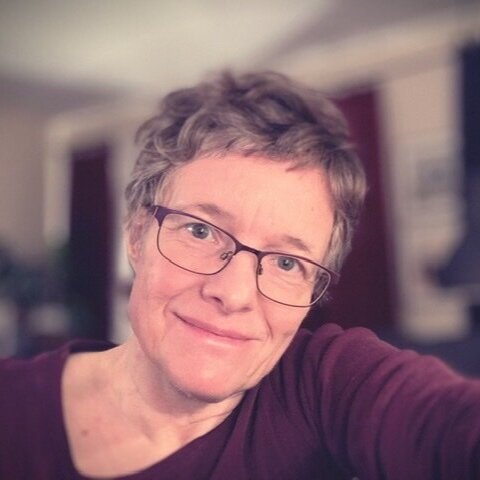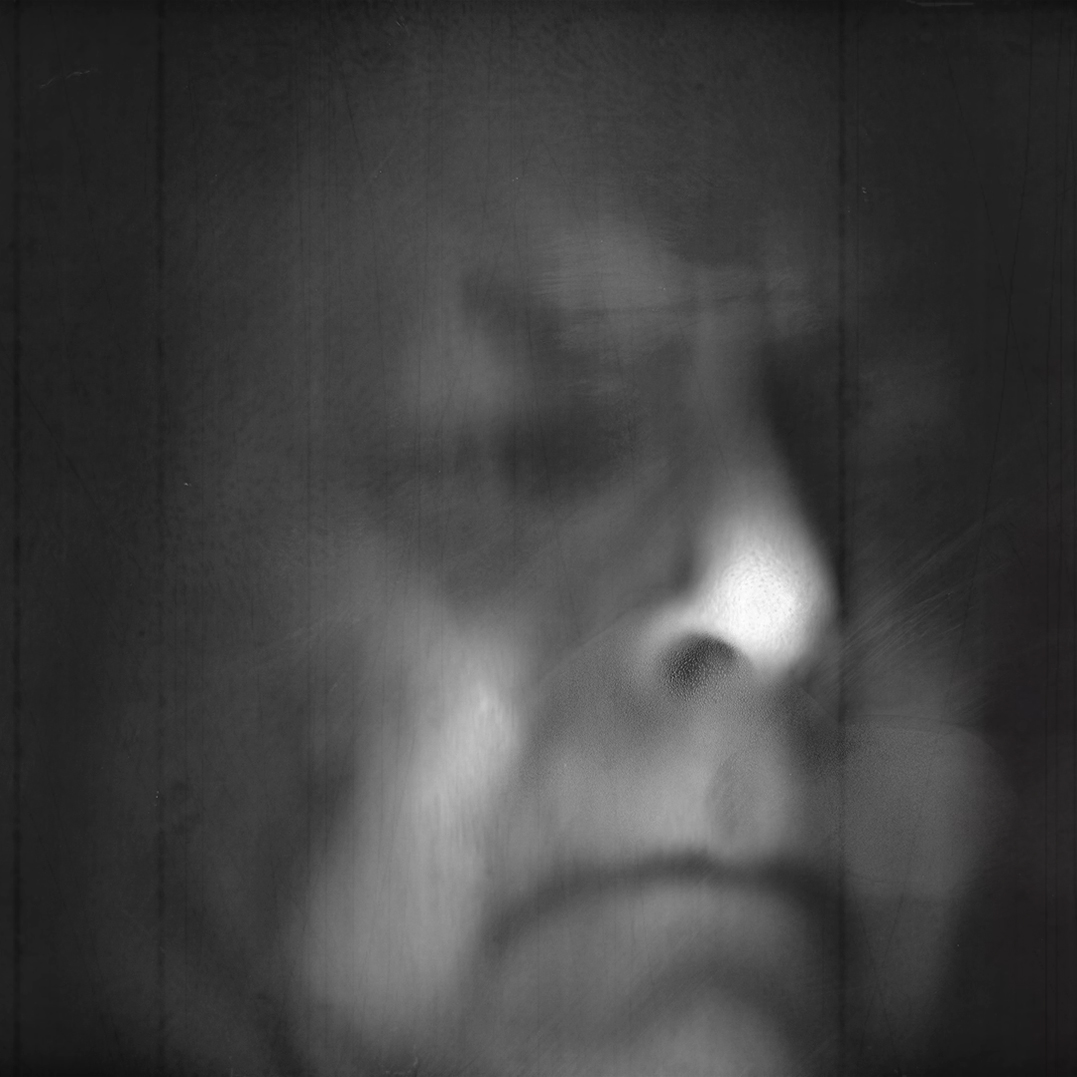Vivi-Mari Carpelan is a Finnish artist now resident in Wales, United Kingdom. In her artistic practice, she has focused on the survival of the individual self in the face of the threatening Other. In this process, she has explored the liminal space where realities meet and mix. In the seam between the outer and inner, the visible and invisible, life and death, change and transformation takes place to form a new idea of self and what it means to be a human being in transition. Ultimately, it’s about the very nature of consciousness and the part paradox plays en route to a deeper understanding of the ambiguous inner realm.
Biography
I’m a photographer and mixed media artist. Over the course of three decades, I have produced symbolic drawings, collage/mixed media, abstract paintings and photographic prints, all presented on paper. For about a decade (c. 2004-2014) I dismantled material from the collective domain and reassembled it. I completed this phase by transforming appropriated moving images and sounds, and transforming them into emotionally charged films and sound collages. At this stage, the investigation was predominantly marked by deconstruction. Taking things apart and attempting to put elements together again in new configurations, was a way of looking at and redefining my idea of self and its relationship with the collective realm.
I’m a photographer almost by default, because both my parents were professional photographers back in Finland where I grew up. I now live in Wales, UK. I have recently enjoyed superimposing both old and new photographs to create a sense of the liminal space between inner and outer reality. Multiple exposure becomes a token for the surreal encounter between imagination and perceived reality and points to the transformative processes of the mind. I don’t use photoshop: instead I enter into a playful dialogue with a simple app on the iPhone. It’s an unplanned journey: the restriction of my personal freedom of choice tends to take me on routes I could not have anticipated had I tried to be more strategic. I mostly use my own work as a basis for these experiments. The series that incorporates photographs of my grandmother the prima ballerina, is an exception to this rule.
I’ve always been interested in polarities and paradoxes. In my current work, I’ve begun to investigate paradoxes in line with the kind of ontological loops that appear to define the matrix of reality, and in my mind, consciousness itself. Contemporary consciousness research that likens our reality to a computer simulation, suggests that external reality does not exist independently, but is really a product of complex processes of perception. Of course, the brain is also part of physical reality, so it’s interesting to ponder the extent to which the brain is helpful in achieving this goal while it’s still a part of its own hallucination, but also where it simply fails to offer a satisfactory explanation for the origin of these complex mental computations (in science, this is called the hard problem of consciousness). Without going into scientific speculations about the nature of reality itself, I’d like to propose ways of observing and imagining the points of connection between internal and external reality. The focus of my investigations are the metamorphoses that occur in this most ambiguous and hard-to-reach realm of reality-construction.
On the one hand, this work, like any work of art, is a product of my mind. On the other hand, I have attempted to depict the mind by offering glimpses of its processes and whatever contents my own mind happens to be focusing on. You might say, that the images resemble still frames from a movie of the ongoing processes in the headspace. The work is an ongoing experimentation with the idea that the mind can be made the most visible by using its most powerful tool, the imagination. How can the mind, which is busy dealing with the outside world, also perceive of itself?
Background
The complex chronic medical conditions Ehlers-Danlos Syndrome and fibromyalgia have informed my art. The connective tissue disorder is a structural disease that threatens stability and order. The faulty collagen is the glue that isn’t holding the body parts together the way it normally would, and so it’s not surprising that I have always been interested in the ways in which chaos and liminality provide the basis for connectivity. Lately, I have also struggled with a permanent and painful ear injury called hyperacusis, which also involves very bothersome tinnitus that I can never escape and only serves to high light the existing brain fog. A serious sleep disorder gives me interesting insights into the hypnagogic state between wakefulness and sleep, and this is yet another reason I’m compelled to investigate liminality. All in all, I am more than painfully aware of the cognitive limitations brought on by my medical conditions and all the neurological mishaps behind them. The battle for greater order and clarity has probably shaped my idea of self more than anything else. I’m aware that construction and reconfiguration can only appear as the result of death and destruction. The trick is to navigate this minefield of poor connections without getting completely lost in it. Life asks us to learn to put up with uncertainty and hold it together even under duress.
There’s a sense of terror when the physical habitat is unreliable and unstable and profoundly uncomfortable: you feel imprisoned in a body you cannot control as much as you’d like. It’s difficult to accept the body as your own. Yet all the same, you have no choice but to accept the limiting terms and conditions and become the hero of your own life. But an unreliable body is not the only challenge, of course. There is also the opposition or ‘the Other’. As everyone with a disability will know, the pressure to perform in accordance with patriarchal value systems can have devastating consequences to one’s sense of self. Not only that gaslighting is rampant in society today, but there is also very little help and support to be had for those whose medical concerns have been at least partially acknowledged. When we’re under siege, it can be hard to access the person we feel deep down that we really are. There is a sense that one is constantly at war with forces within a system that’s trying to break those who are breakable. In this process, it is best to make peace with the state of conflict inside one’s own body and mind. The more you search within, the more you are likely to find. If one were to extract something useful from all the negativity that permeates society today, it would surely be the potential to improve on one’s idea of self. Hopefully it can highlight the importance of engaging in the constant reinvention of self for the purpose of personal growth.
Looking back, it would seem that the main object of my art and writing has been the vindication of human dignity in the face of demoralisation, and reinvent the broken self as the hero of an existential battlefield that no one has chosen to be part of yet no one can escape. Because conflict can only arise where oppositional forces are at play, I have found that the main focus of the process of revendication must be the dichotomies that pervade our understanding of reality. The impossible riddle of a fairy tale can turn into a paradox that can be comprehended by the adult.
The unexpected death of my husband artist Martin Herbert in late 2014 (see gallery), formed a turning point in more ways than one. The eerily serendipitous sound based work about death I completed just a few months before my husband passed away, became the basis of further investigations into the invisible aspect of reality and the nature of consciousness. The idea of death as a transitional state and point of change rather than as an absolute and finite occurrence, fascinates me and informs my current artistic outlook. I’m intrigued by the ambiguity that underlies transformative processes. But more than anything, I’m fascinated with the transformation of self into an unconventional idea of a new human being.
A few years later, a new synthesis of past experiences started to emerge. I needed to find ways of making disparate elements and contradictions make new sense, and in this process, I became interested in the visual representation of ambiguity and uncertainty. I also needed to find a simple and rational way of working that wasn’t physically taxing, and so I began to work from out of my couch. I developed a way of superimposing my photographs through simple filters for double exposure on my iPhone. Thanks to technology, I discovered that a date with chance was now my best source of inspiration and artistic development, as this led to an interesting balance between determinism and indeterminism. In the process, I perfected a method that allowed me to create the impression of an inner realm beyond physical appearances. This was the rather chaotic liminal area where undifferentiated psychic content turns into differentiated thoughts and emotions. (Read more here).
The tug of war between the uncompromising perimeters of technology and my personal photographs, offered a metaphor for a deeper process of reconciliation with aspects of life that are beyond our control. This was a way of processing the inevitability of destiny, a theme that has haunted me since I was young enough to understand what it means. At the same time, I am well aware of the necessity of reinventing the self again and again in order to affect path of destiny as it meanders into the uncertain future. The Other obviously plays a big part in this tug of war because we can really only define ourselves in relation to something else. Since the reinvention of the self is a process that involves the constant death and rebirth of the self, death would seem to form an integral part of our existence from moment to moment. In my recent work, I have combined architecture, nature, texture and abstract patterns with Instagram type selfies to create a dreamy twilight zone of reconstruction and hope. The process mirrors my belief that it’s possible to transcend the screeching experience of conflict and chaos in favour of a more fluid, interactive and mutually enriching dialogue between self and Other. But for this to occur, the Other has to be understood as an aspect of one’s own self.
In the ‘About’ section, you can read more about my work between 1990 and 2014.
CURRENT PROJECTS









